METEORA (Day 6 - part 2)
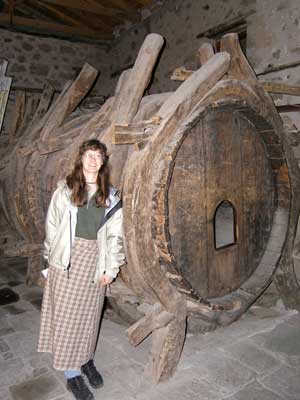
This giant wine barrel can hold 13,000 liters!

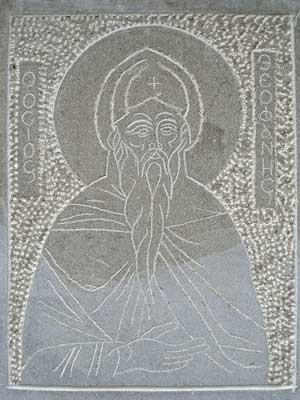
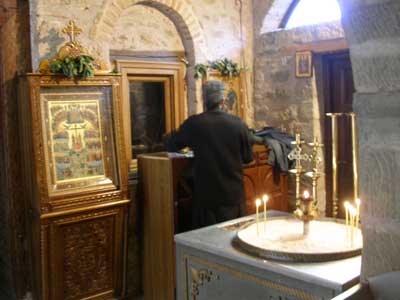

A monk cleans some silver.... and the giftshop
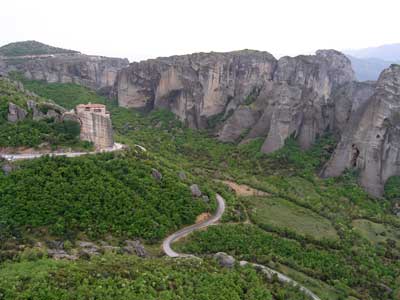

A view of the nearby Monastery of Rousanou
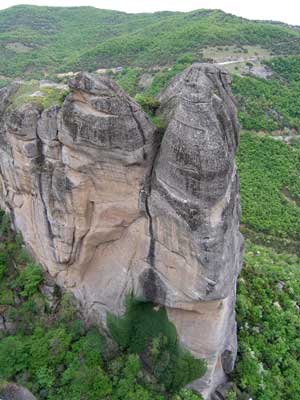
Some pinnacles from above. Each pinnacle supposedly has its own name.
We returned to the bus and made our way back down to Kalambaka.
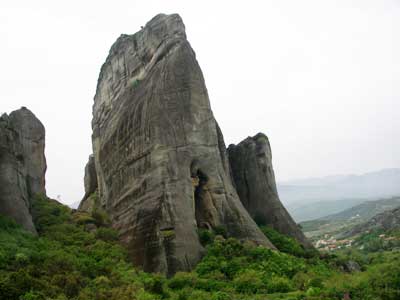
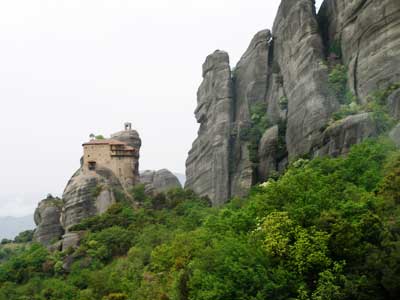
More pinnacles... and the Monastery of St. Nicholas Anapafsas
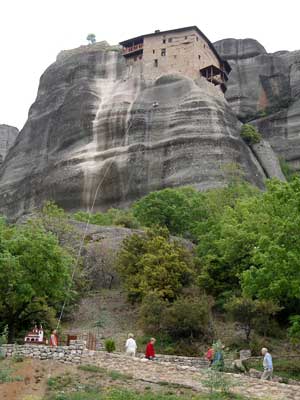
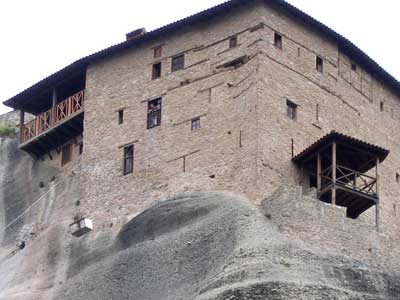
A small basket was being hauled up to the monastery.

Known as the cave of St. George of the Scarves (Madilas), it is a tradition on April 23rd of each year for people scale the 130 feet (using ropes, of course) in order to offer scarves in the hopes of protection and health. Saint George (circa 281- 303) was a Greek who became an officer in the Roman army. Immortalized for slaying a dragon, he is one of Christianity's most honored saints.
The legend of the scarves is such: In the early 17th century, this area, like most of Greece, was under the Ottoman rule. A Muslim landowner was cutting down some trees from a sacred forest dedicated to St. George. There was an accident and he was badly wounded. At the advice of her Christian neighbors, his wife prayed to the saint for help, offering him the most valuable thing she owned... her colorful headscarf. Miraculously, the man was cured.
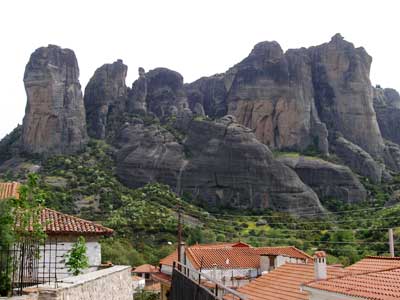
Back in Kalambaka

The Cathedral of Saint Vissarion was built from 1954 to 1984 to honor Bessarion II (circa 1489 - 1540), a saint and the Archbishop of Larissa who built the Monestary of St. Bessarion (Dousikou) in neighboring Trikala in 1527... where his head is allegedly still preserved as a relic.
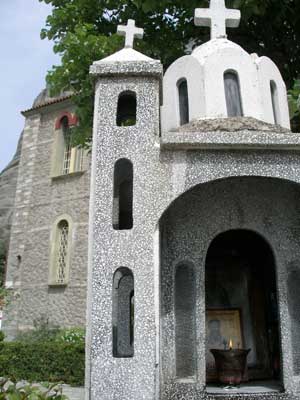
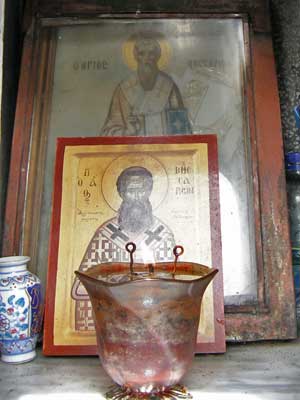
A shrine to St. Bessarion II of Larissa
We stopped by the the Byzantine church of Koimisis Theotokou (Holy Church of the Assumption of the Virgin Mary). Founded in the 10th century, it is the oldest church in the region. Unfortunately it wasn't open.
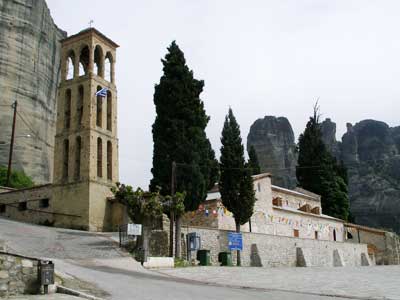
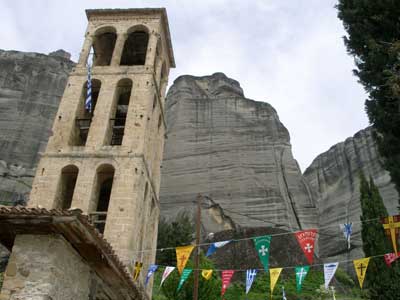
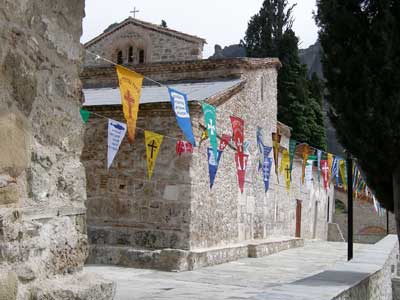
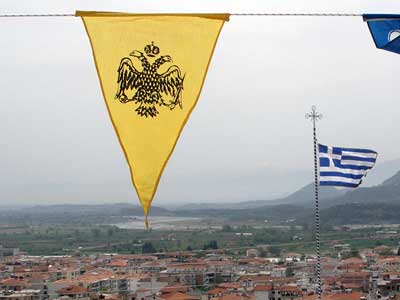
Again we saw the flags of the church and the state.
We started the drive back at 1 pm and were back in Athens by 7 pm where we booked back into our old hotel.
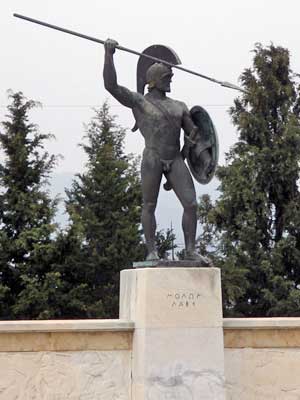
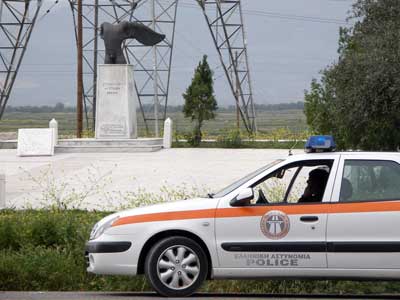
The Leonidas monument in Thermopylae, built in 1955 to honor the Spartans who died here... and the Thespians' monument built in 1997, dedicated to those who fought with them.
This was the location of the Battle of Thermopylae. 2,500 years ago, this region was just a narrow strip of land that the Greek army used to cut off enemy troops heading north or south. During the second Persian invasion of Greece by Xerxes I from 480 - 479 BC, the Greek alliance (led by King Leonidas of Sparta) was vastly outnumbered (300 Spartans & 700 Greeks vs. 10,000 Persians), but they managed to hold this position for seven days. Unfortunately they were betrayed by a local resident who showed the Persians a secret ravine to attack Greek army from the back. The Greeks, including Leonidas, were annihilated.

The tall mountains across the bay are from Euboea or Evia, the second-largest of the Greek islands.
return • continue

